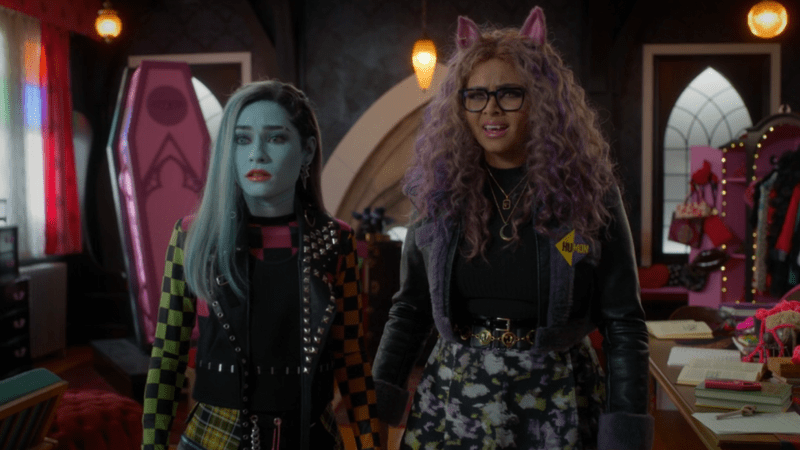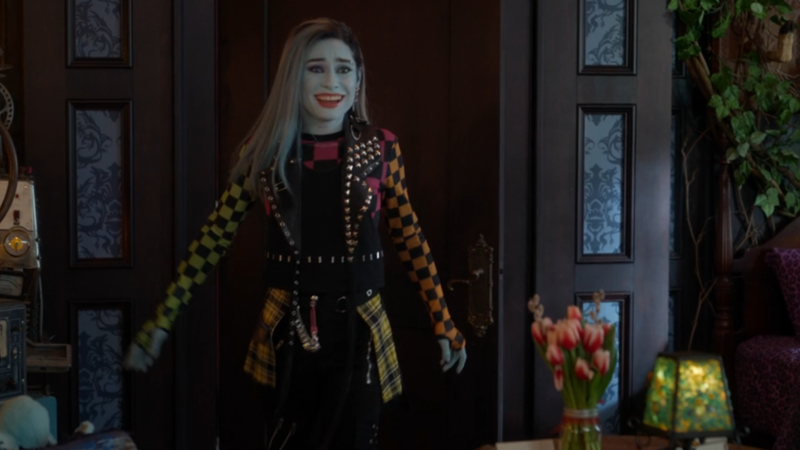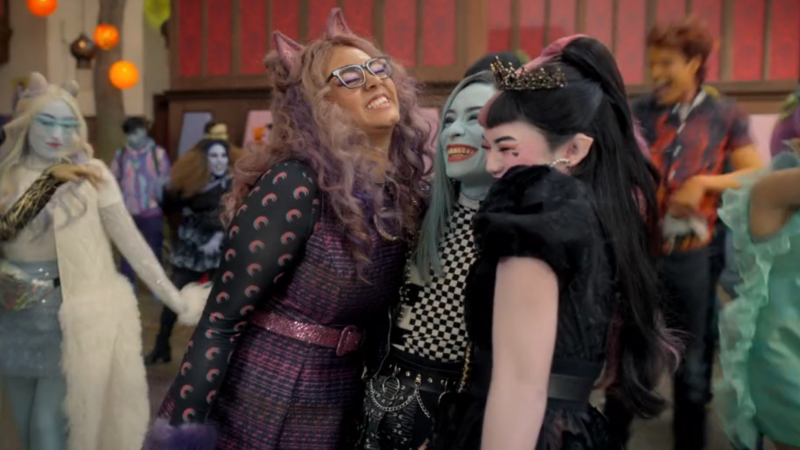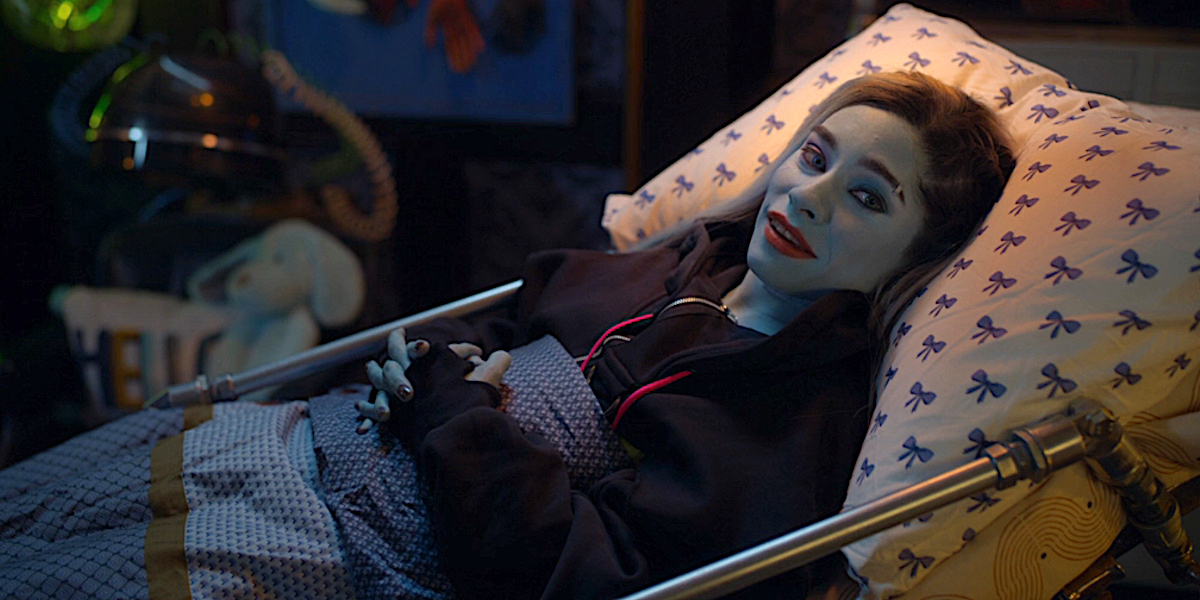Just in time for spooky season, Monster High 2 is here to provide more musical, magical mayhem for our monstrous teens: Clawdeen, the werewolf, Draculaura, the vampire, and Frankie, the nonbinary Frankenstein’s monster.
Our trio spent the first Monster High movie saving their school and making sure all monsters were welcome — even half-monsters. They also learned to accept who they are: Clawdeen accepted her human side, Frankie learned how to make friends despite lacking social skills due to being 15 days old, and Draculaura came out as a witch. Together, they brought their school full of mummies and zombies and gorgons and sirens and abominable snowpeople together, all while singing and dancing to banger after banger in a kind of dark fairy tale fever dream. This series has the same ingredients as a DCOM but it is distinctly Nickelodeon in a way I don’t know how to describe. It’s Descendants but make it Victorious.

Of course, going into sophomore year isn’t without its stressors. Monster High 2 finds Clawdeen feeling pressure after becoming a little famous from saving the school, Draculaura feeling pressure from her father, and Frankie adjusting to changes after making upgrades to their body. (A trans puberty metaphor if I’ve heard one.) Plus, there’s a new girl, Toralai, a were-cat here to stir up trouble, including starting a hate campaign against witchcraft with Draculaura in her crosshairs. (She also gives me queer vibes, with lines like “we share the moon” but that is neither here nor there.)
Just like in the first movie, when Frankie meets someone new, they say their name and their pronouns (and sometimes their age, which is always funny) and the person they meet always responds with their own pronouns. I sort of wish that in Monster High 2, everyone would have done that having learned from Frankie’s example, but I’m glad Frankie’s nonbinary-ness continued to be a non-issue for all the monsters they met.

Monster High 2 has the musical-movie-sequel tradition of having a friend breakup song in it, complete with lyrics such as, “couldn’t you fix the world’s problems, like, some other time,” and has the trio learning that the greatest power they can possess is the power of friendship. (Cue the awwws.) There are also some heavy-handed metaphors about Draculaura and her witchcraft, and at one point she even accuses Clawdeen of asking her to “go back in the broom closet.”
Overall, it’s a very cute, sweet movie about not perpetuating the prejudices of your parents, and ending feuds that have nothing to do with you. (Just because your witch mom hates vampires doesn’t mean you have to, you know?) These little monsters are breaking generational curses and making their own way in the world, becoming a more accepting and inclusive generation than the ones who came before them.

Frankie is happiness personified, and their optimism is contagious. Trans actor Ceci Balagot, who plays Frankie, described them as a trans person who has never experienced transphobia, and says getting to embody that trans joy day after day gave him more confidence in his own trans identity. On Instagram, they thanked the creators of the movies, “for allowing the story of a happy trans child to be told during a time when so many are trying to erase our stories.”
It’s so important to have what Balagot calls “casual representation” in a movie like this intended for children.

You see a lot of alt-right “One Million Mom” types whining “how am I supposed to explain all-gender bathrooms to my kids” (A real Tiktok I saw just this morning when it was stitched by someone being like “Hey kids, know how at home we all use the same bathroom? It’s like that.”) when the truth is, kids are more ready to accept this information than adults. They’re still learning the way of the world, learning something new practically every day, so they have the elasticity to learn that some people aren’t boys or girls and instead live outside that binary. They have the capacity and willingness to learn how to use they/them pronouns. Adults have that ability too, of course, but for some it seems that the thirst for knowledge and desire to learn are a bit rusty. But show kids a movie where someone introduces themselves using they/them pronouns, and have that character’s peers model how to use them, and without even realizing it, these kids have learned how to respect someone’s pronouns.
I even think Frankie being made up of “boy parts” and “girl parts” (for example, some of Marie Curie’s brain, the heart of a fisherman, etc.) isn’t a bad way to to introduce the concept of someone being nonbinary in a very elementary way; someone who isn’t all girl or all boy, but a little of both. Obviously some nonbinary people feel more like “none of the above” than “a mix” but that lesson is more easily taught when they have context to scaffold off of. I guess what I’m saying is, characters like Frankie are what will help kids break their own generational curses so that they can become more accepting and inclusive than the ones who came before them.
Both Monster High and Monster High 2 leave you with one final message after the credits full of fun behind-the-scenes footage, and I’ll leave you with that message as well:
“Be yourself, be unique, be a monster.”








Comments
thank you for this review Valerie! now i want to watch both Monster High movies!